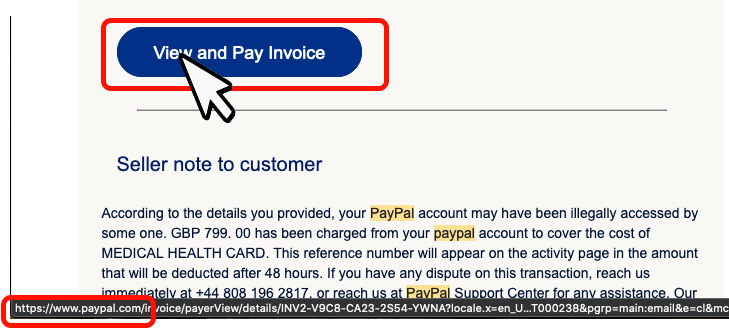on
 Made in the UK
Made in the UK
 Made in the UK
Made in the UK

|
Tuesday 29th November 2022 at 08:03 By Rob |
 |
Goodness me the amount of scams you get through email these days trying to catch you out is unbelievable.
A part of me admires how creative scammers are getting to try and pull the wool over your eyes. I consider myself to be pretty internet savvy (well, I've been a professional web developer for 21 years after all!) but every once in a while there is something that *almost* catches me out, or at least makes me spend longer than 10 seconds reviewing it before I decide to ignore and delete it.
An email I've seen quite a bit recently is this one from PayPal, which seems to be circulating quite prolifically around the internet at the moment.

Some of my most basic tests to quantify if an email is genuine or not are...
1) Does the email come from a genuine email address, or one that looks similar?
Lots of scammers send emails from an email address that looks like the company they're proposing to be, but isn't actually that email address.
For example, a scammer might register a domain name like "paypalverification.com" which isn't PayPal's domain name (their website is paypal.com). Whilst the domain name contains "paypal" it is just fake.
In this instance the email does actually come from paypal.com

Similar to spoofing the email address, if there is a button or link to click on in the email then very often the scammers will have a button going to a website address which is similar to where it should be going, but not the same.
For example, they might have button going to "paypal123.com" rather than PayPal.com

If you hover over a button or link then in most web browsers the destination of the link is shown on the bottom of your screen so you can check where it goes before you actually click on it.
As you can see from the screenshot above this button does actually go to www.paypal.com.
This email DOES come from PayPal but it's STILL A SCAM.
So how did the scammer do it?
A feature of PayPal is that it allows you to send invoices to someone (anyone!) by email. So all the scammer is doing is...
a) Sending you an invoice from PayPal, so that the email actually comes from PayPal
b) Putting a message in that email with a scam phone number (the 44 808 196 2817 number shown above)
You can fall for the email in two ways...
1) You pay the invoice by clicking on the button
or
2) You call the spoof phone number and get scammed that way as you think you're calling actual PayPal but you're not, and they'll probably ask you for things like your PayPal login details and scam you out of money that way
1) Don't pay any invoices you're not expecting
2) Always google the support phone number to see if it's a genuine number or not
3) Visit the PayPal website and contact PayPal directly to check
4) If in any doubt, simply delete or ignore the email!
We can help you sell online easily too!
We have been helping small and medium sized independent businesses sell online easily since 2004, and we can help you too.
If you need a new website for your business, contact us on...
Click here to contact us by email
or call us on01332 896 425
As well as a hand held service, all our customers receive a copy of our marketing tips book which gives you lots of tips and advice on this on how to succeed online.